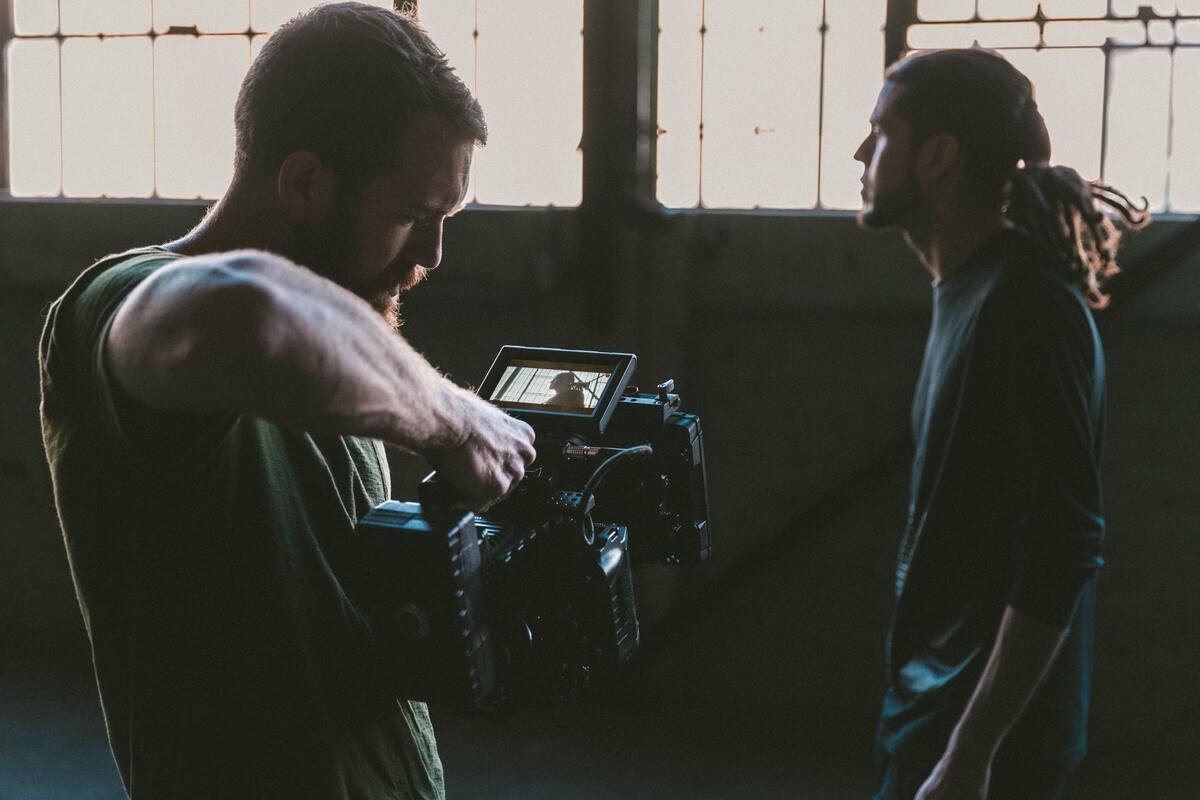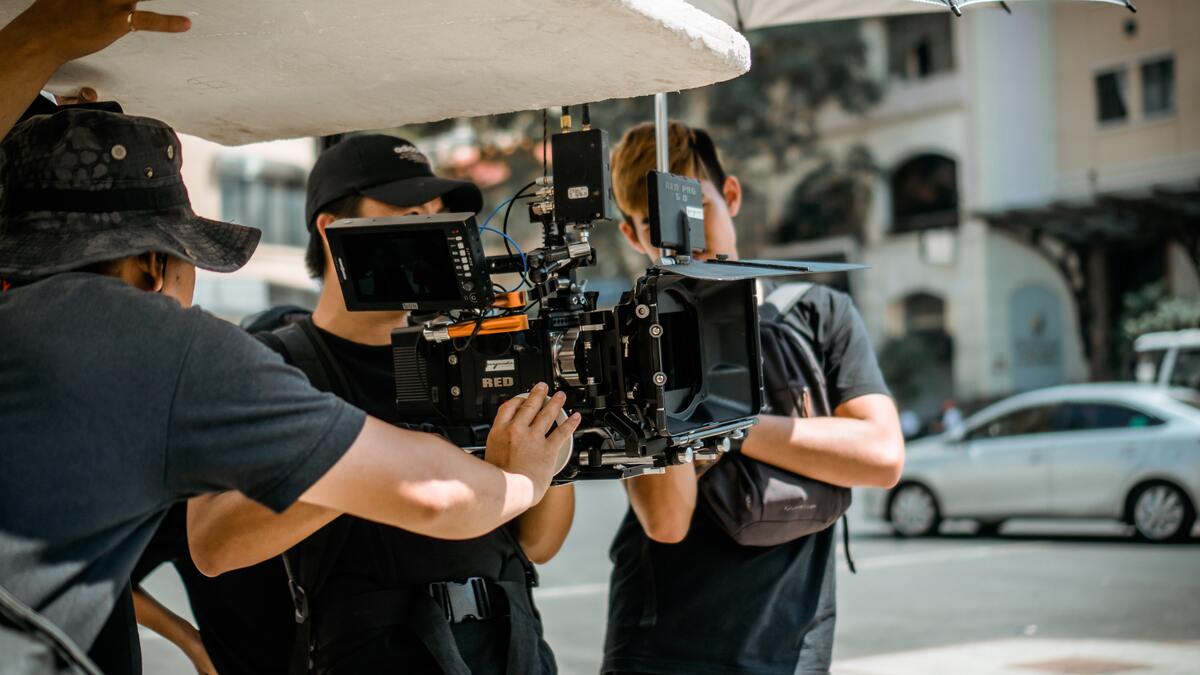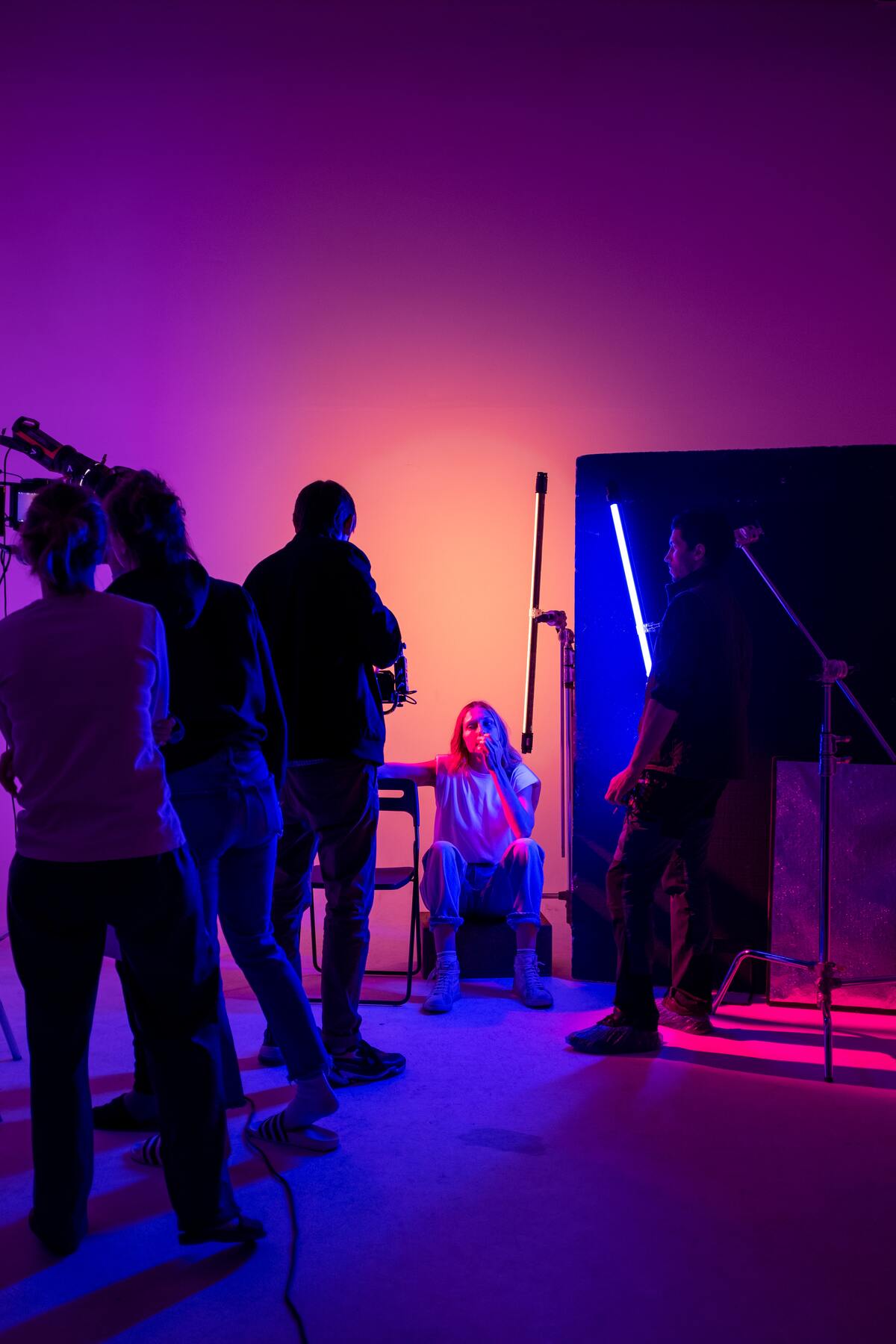A Filmmakers Knowledge Kit: 31 Essential Techniques to Learn
Rent film gear from local filmmakers.

Rent film gear from local filmmakers.
If you’re looking to get into the world of filmmaking, you need to get familiar with the most common film techniques that pros have used for decades.
Read on to learn about camera lighting techniques, cinematic compositions, camera movements, and sound design.
31 Essential film techniques
The following 31 film techniques are essential to understand shooting a significant project or entering a film studio in any role.
The article is divided into sections for your ease of reading.

Camera lighting techniques
Lighting is a frequently overlooked element of amateur productions. Do not underestimate its impact since it strongly affects how the audience views the scene.
It provides a specific feel that helps viewers navigate the feature's topics and emotions.
The placement, quality, and temperature of light all affect the scene and should be considered carefully. Check out this guide to learn more about film lighting.
1. Cameo lighting
Camera lighting features a single spotlight that focuses on a character or object, bringing it to the audience’s full attention. This focus of the cameo light becomes heavily accentuated and is frequently viewed in an angelic light.
2. Floodlighting
Floodlighting or wash lighting is a basic film technique that lights the whole scene evenly with the help of powerful wide-beam light sources. It’s traditionally used to illuminate a theater stage or a building’s exterior.
It provides even light across the scene that does not affect the viewer's emotions.
3. Backlighting
A backlight in a film refers to a lighting source placed behind the actors compared to the camera’s perspective. This lighting defines the characters’ features and makes them stand out dramatically, especially against a dark background.
4. Three-point lighting
Three-point lighting is a classic setup featuring a key light, fill light and backlight. These lighting sources are positioned around the scene to create an appealing and flattering system.
This traditional method is standard for several film and photography types. Its effect can vary based on the light qualities used.
5. Mood lighting
Mood lighting is a film technique based on color theory. It’s centered around dramatic setups that feature noticeable warm or cold light palettes. For example, blue light is often used to project sadness and other negative emotions.

Shot composition
As a creator, you have abundant options in composing your scenes. How much of your settings will you show? What impression do you want to leave with viewers?
Consider the following cinematography shot techniques before creating your shot list for your next project.
6. Extreme long shot
An extreme long shot captures a wide area and focuses on the surroundings rather than the characters moving along it. It’s used to show the scale of subjects and put them in the context of their environment, often for establishing shots.
If you imagine a group of heroes walking through a vast desert, you’ll probably think of an ELS.
7. Bird’s eye shot
A bird’s eye shot is an aerial filming technique where the scene is shot at a high angle. It imitates how birds would see a city or landscape from above. That is where it got its name from!
This composition is often used for establishing shots to help the audience know where the action takes place. It can introduce the location or pan over a battle scene to immerse the audience and convey loads of information.
8. Long shot
A long shot is any shot that includes the whole subject, most often a human, in its entirety from head to toe. It involves and describes the surroundings without bringing the viewers too close to the character.
Scenes with this composition focus on the settings or actions on screen rather than the character’s emotions.
9. Medium shot
A medium shot is one of the most commonly used types. It features about a half or third of the characters' bodies. It’s an excellent choice for dialogues as it conveys information while the body language and facial expressions remain visible.
Medium shots are frequently used in documentary interviews and romantic comedies.
10. Close-up shot
This cinematic technique features an object or character at a short distance. When used for people, it’s often focused on the head and face of the actor.
A close-up shot highlights specific details or heavily conveys emotions. It helps the audience understand or empathize with the actions on screen.
11. Extreme close-up shot
An extreme close-up shot, as the name suggests, is a shot that partially frames a character’s face. This is often their eyes or lips. Used for dramatic or intense scenes, it can be seen as an artistic choice.
This technique is strongly loaded with emotion, often evoking a sense of uncomfortableness or pressure in viewers.
12. Dutch angle shot
A dutch angle is a creative film technique where the camera is rotated, so the horizon is not parallel to the bottom of the frame.
It’s used to convey disorientation and unease, frequently in horror movies or thrillers.
13. Over-the-shoulder shot
An over-the-shoulder shot is used during dialogues. The camera is positioned next to the head of one or both characters. It’s a great way to help the audience immerse themselves in conversation and even assume the role of a character.
It shows off the talking parties’ connection in a way that feels authentic.
14. Point-of-view shot
A point-of-view or POV shot allows viewers to see through a character’s eyes. It makes the audience feel like a part of the story and often relate to the characters. POV shots are done by mounting a camera to equipment on the actor’s head.
15. Aerial shot
Aerial shots are high-angle scenes captured frequently by drones. Similar to bird’s eye shots, they’re used to establish scenes and showcase the location and geography.
This film composition technique often serves as an opening or ending scene.

Camera movement
Camera movement is a film technique used to direct the audience’s focus and reveal information originally located outside the frame.
Several traditional camera movements worked for decades. For an experimental or edgy feel, consider a handheld camera with a gimbal.
16. Tilt shot
The tilt shot features the camera moving vertically up or down from a fixed position. It's used to direct the audience’s focus and can be used for dramatical reveals or introductory shots.
17. Panning shot
A panning shot involves turning the camera on a horizontal axis while it remains stationary as with tilting. Pans are even more common in most types of film and cinema.
They show off the surroundings and allow filmmakers to convey more information without moving the camera.
Panning and tilting have to be smooth and gradual to look professional. Jumpy or wobbly pans are only used in point-of-view shots.
18. Zoom shot
A zoom shot is a technique without any actual camera movement. It brings the visuals closer or further from the camera by adjusting the lens. Zoom shots are done with zoom lenses that allow changing the focal length on the go.
19. Crane shot
A crane shot is a type of shot or movement where the camera is mounted on a crane or jib. During the scene, it moves up or down vertically, quite slowly.
A crane shot is used at the end of a movie or during action scenes involving a crowd. They add suspense and work great for dramatic reveals too.
20. Tracking shot
A tracking shot is a technique where the camera follows characters as they move along the frame. If it wasn’t for this dynamic movement, the subject would leave the frame.
Tracking shots are commonly done with a dolly, but they can be executed manually where the cameraman is equipped with a gimbal or stabilizer.

Editing film techniques
The post-production phase pulls films together where creators ensure that the storyline is coherent, enjoyable, and well-paced.
Professional and skillful video editing is intentional and almost unnoticeable. It doesn’t impose on the story but rather makes sure that everything is fluid.
21. Cross-cutting
Cross-cutting or parallel editing is a video editing technique where the viewer watches two scenes simultaneously unfold while switching back and forth.
It’s usually used to highlight the relationship between the mentioned scenes. These may be similarities, differences, or any sort of connection.
22. Dissolve
A dissolve or lap dissolve is a gradual transition between scenes. During a dissolve, one image slowly disappears as the second one gradually fades in.
This editing transition bridges scenes together in a way that implies consistency. It can indicate changes in time or place and link together events logically.
23. Fast cutting
Fast cutting describes a sequence where several consecutive shots switch quickly, not lingering on the same shot longer than 3 seconds each. This method creates dynamic and energetic sequences and is often used in action movies.
It’s also a great choice for dialogs where nonverbal reactions are crucial to the storytelling.
24. J-cut
A J-cut is a scene transition where the sequence is tied together by audio before it is visually. In practicality, this means that the audience hears the next scene before actually seeing it.
J-cuts make seamless transitions that viewers often don’t consciously notice. They’re easy to execute and have a significant impact on the fluidity of storytelling.
25. Jump cut
A jump cut is an editing method where the transition between scenes is immediate and often jarring. It frequently shows the same elements with a leap forward in time, such as an actor's face cutting to them in the same position but slightly older.
26. Montage
A montage or intercut is a series of scenes edited together to save time and convey loads of information or a time passing. Montages keep the scene dynamic and energetic and are often used to show change over time.
27. Sequence shot
Also known as a long take, a sequence shot refers to a narrative sequence containing multiple scenes. These scenes are not tied together in post-production but are recorded in a single take full of skillful and creative camera movement.
28. Smash cut
A smash cut is used to juxtapose two contrasting scenes and highlight differences. They differ from jump cuts since they show a similar scene where one element, usually time, has changed.
For example, they could show an army celebrating their victory and suddenly reveal a family mourning their loved one at a funeral.
29. Wipe
A wipe is an uncommon transition technique where one shot replaces another through side-to-side movement. As the previous shot slides out, the next one appears.
Modern films don’t regularly use wipe transitions. They’re mostly featured in cartoons and other children's movies.

Sound techniques
Sound design makes a movie come to life, and it helps audiences immerse themselves into the world of the feature or series.
There are two important categories of sound in a film that filmmakers must understand:
30. Diegetic sound
Diegetic sound in a film refers to all and any sound originating from the movie's world. This involves dialogue, the sound of gravel being crushed as the character walks, and the bustling sounds of traffic outside the window.
The source of diegetic sound doesn’t need to be on screen, but the audience must share an understanding that the sound is coming directly from the film.
31. Non-diegetic sound
Non-diegetic sound includes every sound that is there for the audience that the film characters can't hear. These sounds consist of the soundtrack, background music, narration, and foley effects.
Up next: 50+ camera angles and shots
Finally, you’re familiar with the terminology of 31 professional film techniques.
Which ones will you try in your next production?
Up next: 50+ camera angles and shots every filmmaker needs to know.
Expand your filmmaking knowledge to become the next Scorsese or Spielberg.
What are some film techniques?
Film techniques include everything from shot compositions, like a dutch angle to sound design, like non-diegetic sounds.
What are production techniques in film?
Production techniques include everything from the pre- to the post-production of a film, including the actual shoot.
What are 3 cinematic techniques?
The 3 commonly mentioned cinematic techniques include camera shots, movements, and angles.





















